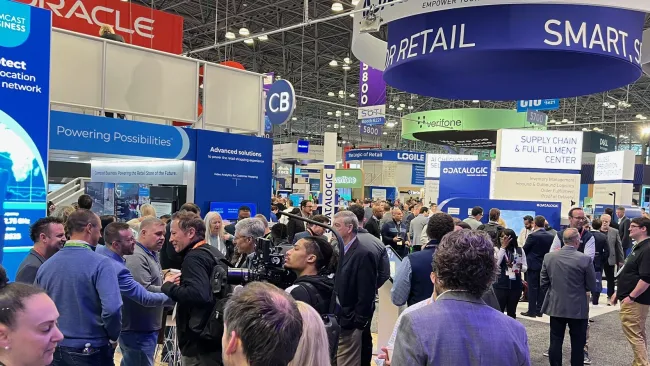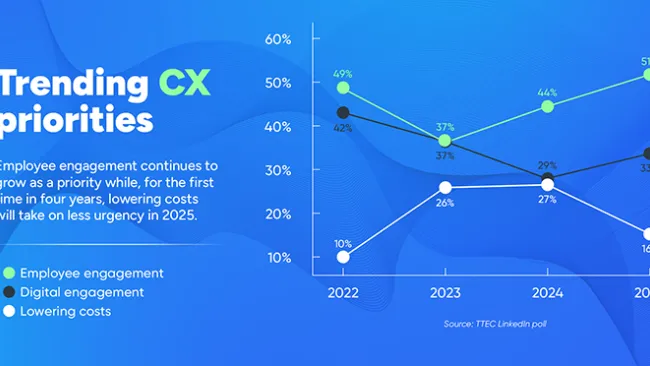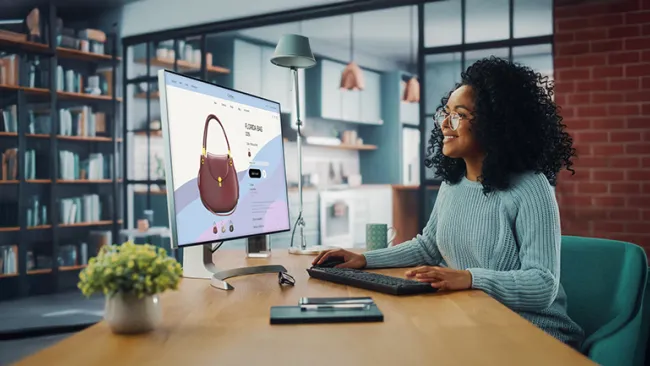From a massive ecommerce shift to curbside pickup and store floors converted into fulfillment centers, the retail experience has rapidly changed. In response to these changes, consumer expectations are higher than ever—not just for merchandise but for convenience, personalized customer service, and an excellent customer experience.
At NRF 2022: Retail’s Big Show, retailers and industry experts outlined the future of retail experiences and the challenges they face in meeting consumers’ raised expectations.
1. Evolve stores to complement digital journeys
One of the key takeaways from the conference is that “experience is the plan for the future,” said Jon Stough, vice president of sales at TTEC. “Regardless of whether it’s brick-and-mortar or online, the experience is the future of retail.”
Even before the pandemic, retailers knew that as digital and physical worlds collided, stores needed to adapt the in-store experience to stay relevant. As retail brands figure out how to adapt their physical spaces to fit in an omnichannel strategy, they should consider what purpose their stores serve, said Jeff Bradbury, senior marketing director at Hughes Network Systems.
“Every brand needs to decide how to [adapt their stores] in a way that’s unique to them,” Bradbury said. “Do you want a high-touch immersive experience or is it about efficiency and convenience, or something else?” The challenge, Bradbury added, is for retailers to not only create digital-enabled stores but to integrate them into buying journeys that work no matter which path a customer takes.
2. Fill labor gaps in non-traditional ways
An army of employees is needed to carry out the tasks that keep the retail experience humming. However, more than 90% of retailers are facing talent shortages. And at a time when there are more job openings than candidates, would-be employees are looking for more reasons to work in retail, noted Best Buy CEO Corie Barry at an on-stage interview.
“They ask, what is my career path? What are my benefits? What does my development look like,” Barry continued. This leads executives to ask, “How do I offer this suite of things to my employees that will help them stay sticky to me as a company?” While Barry did not provide a remedy, she indicated that employee experience and retention were a priority for retailers.
Retailers are also looking into upskilling and/or cross-training employees as another way to increase retention and fill roles. At a breakout session, Will Eadie, CRO of WorkJam, explained how companies are doing exactly that.
“One of the things we’re seeing is this idea of employees hiding in our own companies,” Eadie said. “What if we could gigify inside our own stores and distribution centers to fill those gaps? Instead of searching for new employees, by providing more training and flexible scheduling, retailers are beginning to provide part-time employees with more hours and higher wages, for instance.”
3. Scale retail experiences with AI
In addition to finding more innovative ways to hire employees, the future of retail will be increasingly defined by artificial intelligence, according to retail and technology experts. In a keynote session, IBM Chairman and CEO Arvind Krishna estimated that even if retailers and other companies hired more aggressively, there still won’t be enough people to fill the roles. Instead, he predicted that companies “will use more automation and AI to take care of repetitive tasks.” Increasingly, the question that companies ask will be, “how do we improve the experience for customers using AI if we can’t find enough people?”
Indeed, the “customer experience that retailers provide needs to be dynamic to adapt in real-time and provide information, products, and services on-demand,” noted Raghu Ravinutala, co-founder and CEO of Yellow.ai. “This kind of real-time personalization can only happen at scale by leveraging AI.”
As an example how retailers are using AI to improve the customer experience, Ravinutala pointed to Sephora. “Sephora launched conversational engagement using AI and beauty assistants collaborating to provide product recommendations [via in-app messaging and platforms like Whatsapp] and now this has become a core channel for customer engagement.”
Future-proofing retail
While retail continues to face numerous headwinds in the form of supply chain challenges, inflation, and labor shortages, the industry has made enormous progress in advancing the customer experience. Customers have more options than ever to purchase and receive products from brands seamlessly through multiple channels. And some trends, such as consumer expectations of inclusive, sustainable brands, are still gaining steam. But as much as things change, some things remain the same. Notably, the brands that succeed are the ones that stay customer-focused, no matter what challenges arise.















